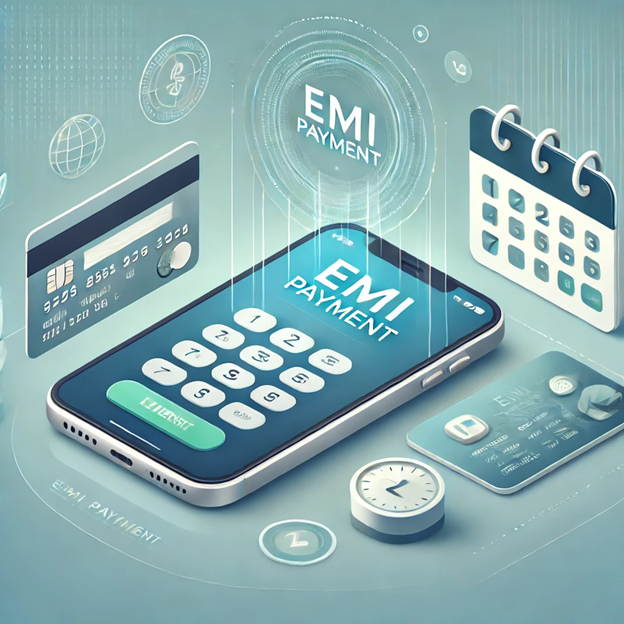What to Expect in Your EMI Payment & Repayment Schedule
 Repayment schedule
Repayment schedule
Taking out a loan comes with the responsibility of making monthly EMI payments to repay the borrowed amount. Understanding your repayment schedule is essential to ensure that you are financially prepared to manage your loan repayments. A repayment schedule provides a clear breakdown of your monthly instalments, including how much of each payment goes towards the principal and interest. For those using Bajaj EMI payment plans, this schedule helps simplify the process by offering flexible and easy repayment options.
In this article, we will explore what you should expect from your EMI payment plan and how to manage your repayment schedule effectively.
What is an EMI?
EMI stands for Equated Monthly Instalment, a fixed monthly payment made to repay a loan. Each EMI consists of two parts:
- Principal: The amount you borrowed.
- Interest: The charge paid to the lender for borrowing the principal.
Your repayment schedule is created at the start of the loan and details the monthly payment amount and the timeline for paying off the loan. The EMI remains constant throughout the loan term, helping you plan your finances accordingly.
Understanding the repayment schedule
A repayment schedule is a breakdown of the entire loan term, showing the amount you owe each month, the payment due dates, and how much of each payment goes towards the principal and interest. The repayment schedule is typically structured so that more interest is paid at the beginning, with a gradual shift toward paying off the principal over time.
Key components of a repayment schedule
- Loan tenure: The total duration of your loan.
- EMI amount: The fixed monthly payment you are required to make.
- Interest rate: The rate charged on your loan, which may be fixed or variable.
- Payment dates: The specific dates on which your payments are due.
- Breakdown of principal and interest: A detailed summary of how each EMI contributes to repaying the principal and interest.
At the start of your loan, most of the EMI goes toward interest. As you progress through the loan term, the principal portion increases, and the interest decreases. This balance allows you to pay off the loan by the end of the tenure.
Bajaj EMI payment: An overview
Bajaj Finserv offers flexible EMI payment plans for loans, allowing you to convert large purchases into affordable monthly instalments. With Bajaj’s EMI network, borrowers can pay for high-value items, like electronics or home appliances, through manageable monthly payments.
Features of Bajaj EMI payment plans
- No-cost EMI: Many products come with no-cost EMI, where you only pay the product price in instalments without additional interest charges.
- Flexible loan tenure: Bajaj EMI payment plans allow you to select repayment tenures from 3 to 24 months, depending on your financial situation.
- Online management: Track your loan progress, EMI payments, and remaining balance through Bajaj Finserv’s online portal.
- Prepayment options: Bajaj Finserv allows prepayment or foreclosure of loans without penalty, giving you flexibility to pay off the loan early and save on interest.
What to expect during EMI payments
1. Fixed monthly payments
Once your repayment schedule is set, you’ll be making fixed payments each month. Whether you’ve chosen a Bajaj EMI payment plan or another loan provider, the consistent payment amount makes it easier to manage your finances and stay on top of your budget.
2. Interest vs. principal payments
During the initial months of your loan, the EMI primarily covers interest. Over time, the balance shifts, and more of your EMI payment goes toward reducing the principal. This is especially important to note when tracking your loan repayment progress.
3. Online loan tracking
Most lenders, including Bajaj Finserv, provide online platforms where you can monitor your repayment schedule and check the remaining balance on your loan. This feature is especially useful for staying organised and ensuring that payments are made on time.
4. Late payment penalties
Missing an EMI payment can lead to late fees, penalties, and a negative impact on your credit score. It’s important to stay on track with your repayment schedule and avoid any delays in payments. Set reminders or use automatic payments to avoid missing due dates.
5. Prepayment and foreclosure options
Some lenders allow borrowers to prepay part of the loan or close it early without additional fees. Bajaj Finserv offers this option, which can help reduce the total interest paid over the loan’s tenure. Consider this option if you receive extra funds and want to reduce your loan burden.
Managing your repayment schedule effectively
To stay on top of your repayment schedule, follow these tips:
1. Budget for EMIs
Ensure that your monthly budget accounts for your EMI payment. Adjust your expenses to prioritise loan repayments and avoid financial strain.
2. Set reminders
Use your lender’s mobile app or online portal to set up payment reminders, so you don’t miss due dates.
3. Track your loan progress
Regularly check your loan statements to monitor how much of the principal and interest remain. For Bajaj EMI payment plans, this information is accessible online.
4. Consider prepayment
If you have extra funds, consider prepaying a portion of your loan. This will reduce your overall interest burden and allow you to repay the loan faster.
Conclusion
Understanding your repayment schedule and managing your Bajaj EMI payment plans effectively is crucial to staying on top of your financial commitments. By budgeting for your monthly EMIs, setting reminders, and taking advantage of prepayment options, you can manage your loan repayment without disruptions. Stay organised and monitor your loan progress to ensure that your repayment schedule remains on track, helping you repay the loan smoothly and efficiently.







